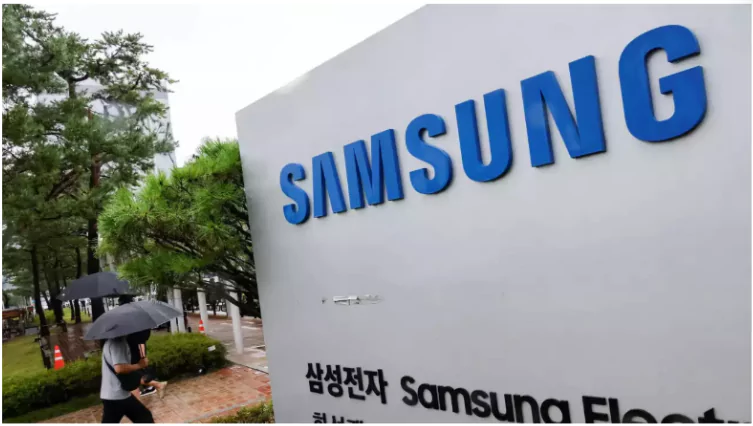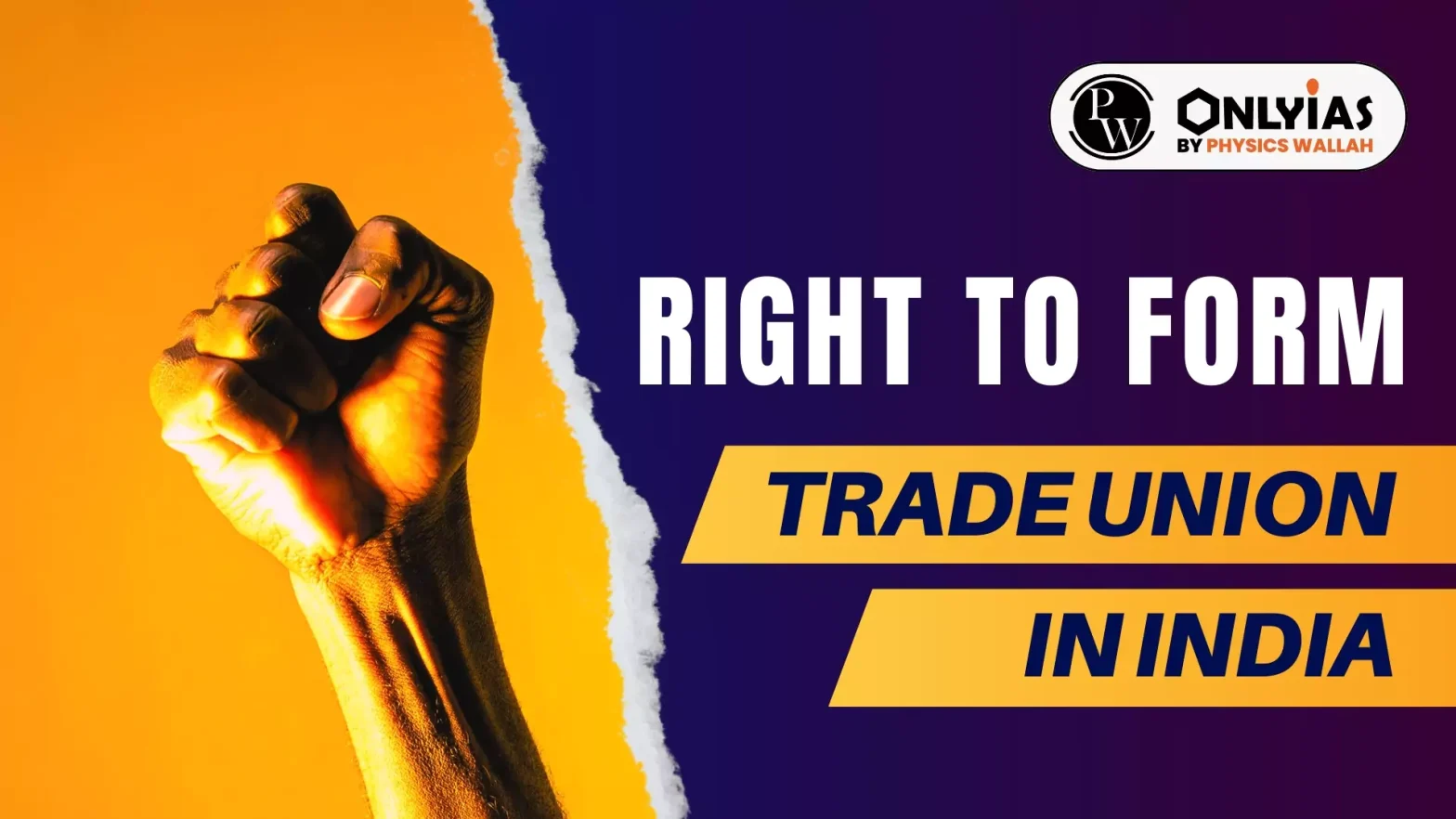Samsung India workers’ at Sriperumbudur in Tamil Nadu are protesting for their fundamental right to form a registered trade union to collectively bargain for better terms of employment.
Samsung Workers Demand Union Recognition Amid Police Action in Tamil Nadu

- Fundamental Right to Form a Union: The workers at Samsung India’s Sriperumbudur facility are demanding the registration of the Samsung India Workers Union (SIWU) to enable collective bargaining for better employment terms.
- This is rooted in their fundamental right to form a union, as upheld by Article 19(1)(c) of the Constitution.
- Government’s Response: The Tamil Nadu government formed a ‘workmen committee’ to resolve the issue but also resorted to police action to suppress the strike.
About Workmen Committee
- A workmen committee, also known as a works committee, is an integral body within industrial establishments aimed at fostering better relations between employers and employees.
- It plays a key role in resolving conflicts and maintaining industrial harmony.
|
-
- Labour law experts criticized this as premature since the workers’ union had not yet been registered. Samsung’s Objection: Samsung has raised concerns regarding the use of its name in the SIWU, citing a violation of the Trade Marks Act, 1999.
- However, the workers argue that trade unions are not business concerns and are protected under the Trade Unions Act, 1926.
Enroll now for UPSC Online Course
About Collective bargaining
- Collective bargaining is a voluntary process where workers and their employers negotiate the terms and conditions of employment.
- It’s a fundamental right that’s recognized in the ILO Declaration of Fundamental Principles and Rights at Work.
Key Legal Principles for Collective bargaining
International Laws on Collective bargaining
- Right to Organise and Collective Bargaining Convention, 1949
- This fundamental convention from the ILO protects workers from anti-union discrimination and protects workers’ and employers’ organisations from interference.
- ILO Declaration of Fundamental Principles and Rights at Work, 1998
- This declaration reaffirms the importance of the right to collective bargaining.
- It was adopted in 1998 and amended in 2022, is an expression of commitment by governments, employers’ and workers’ organisations to uphold basic human values – values that are vital to our social and economic lives.
- It affirms the obligations and commitments that are inherent in membership of the ILO, namely:
- Freedom of association and the effective recognition of the right to collective bargaining;
- Elimination of all forms of forced or compulsory labour;
- Effective abolition of child labour;
- Elimination of discrimination in respect of employment and occupation; and
- Safe and healthy working environment.
- ILO Convention No. 154 (1981)
- This convention outlines collective bargaining as a process for negotiating working conditions and terms of employment, and regulating the relationship between employers and workers.
|
- Constitutional Provisions for Collective bargaining:
- Freedom of speech and expression:
- Article 19(1)(a) provides the right to freedom of speech and expression which is one of the most important fundamental rights which provide every citizen to express their views or to express dissent.
- Thus, every citizen has the right to speech and expression, which can be exercised individually or in groups.
- The right to form an association or union:
- Article 19(1)(c) provides the right to form an association or union which can be said to be the foundation of the trade unions in India.
- Workers participation in management:
- Article 43A gives the state the authority to enact and implement laws that encourage workers to take part in management.
- Legal Provisions related to Collective bargaining:
- Industrial Disputes Act, 1947
- The primary law governing collective bargaining in India.
- This act gives workers the right to form trade unions and bargain with employers.
- It also allows for the resolution of employment disputes through a conciliation officer, board of conciliation, or labour court.
- Trade Unions Act, 1926
Key Judgments on Right to form Trade Union
- All India Bank Employees’ Association v. N.I.Tribunal (1962): The Supreme Court dictated the rights of the members of the trade unions in accordance with the Fundamental Right to Freedom of speech and expression under Article 19(1)(c).
- Bharat Iron Works v. Bhagubhai Balubhai Patel (1976): SC stated that the concept of collective bargaining is a part of the modern-day concept of the welfare state and that such a method should be exercised in a healthy manner and in a way where there is cooperation and respect between employees and employers.
- B.R. Singh vs Union of India (1989): Upheld the right to form unions as a fundamental right.
-
- Restrictions on union formation must be reasonable, based on public order, morality, sovereignty, or integrity.
- Rangaswami vs Registrar of Trade Unions (Madras High Court): Defined the Trade Unions Act as enabling labour organisation for collective bargaining.
|
-
-
- Registration of a union under the Trade Unions Act, 1926 is essential to facilitate collective bargaining and grants immunity from civil and criminal action.
- Section 4 of the Act allows as few as seven workers to apply for union registration.Industrial Employment (Standing Orders) Act, 1946
- Defines standing orders, which are rules related to matters like classification of workers, attendance, and leaves.
Check Out UPSC CSE Books From PW Store
Advantages of Collective Bargaining
- Give workers a larger voice: Collective bargaining allows workers to band together and create a louder voice to help provide a mutually beneficial outcome.
- Improved working conditions: Collective bargaining can lead to safer working conditions and better working standards.
- Single entity representation: It allows them to negotiate with a single entity representing all employees, rather than negotiating with each employee individually.
- Better training: Research shows that workers receive more training when unions are involved, which can lead to higher pay.
- Equality and activism: Collective bargaining can help achieve equality in working societies, reducing the gender pay gap.
- Encourages cooperation: Collective bargaining can improve working relationships by encouraging cooperation.
- Job security: Union membership can lead to lower turnover rates, which gives employees the opportunity to invest in their skills long-term.
- Higher wages: Collective bargaining agreements can lead to significant increases in wages and benefits.
Disadvantages of Collective Bargaining
- Operational Disruptions: Work stoppages, such as strikes, often halt business operations, leading to decreased productivity and significant revenue losses for employers.
- Exclusion of Non-Union Workers: Since collective bargaining usually only benefits union members, employees who are not part of the union may miss out on any improved terms or conditions negotiated through the process.
- Excessive Union Power: In some situations, unions might gain too much influence, resulting in an imbalance where employers are put at a disadvantage.
- This can occasionally lead to misuse of power.
- Decreased Competitiveness: Collective bargaining may raise labour costs, making businesses less competitive in the global market.
- Companies might respond by cutting jobs or shifting work to countries with lower wages.
- Adversarial Dynamics: The process of collective bargaining can sometimes foster a confrontational relationship between management and employees, eroding trust and collaboration in the workplace.
- Rigidity in Negotiations: Collective agreements often set standard terms that limit the ability of individuals to negotiate their own personalised conditions, potentially making the process less flexible for certain employees’ needs.
Right to Strike
- The right to strike is the right of employees to collectively refuse to work in response to certain conditions, such as labour practices or economic conditions.
- It is considered an essential right for employees and is often recognized as a fundamental human right.
Right to Strike in India
- The right to strike in India is limited and regulated by the Industrial Disputes Act, 1947, which is now part of the Industrial Relations Code of 2020.
- The act defines a strike as a cessation of work by a group of employees in an industry.
- No Explicit Constitutional Right: The Indian Constitution does not explicitly guarantee the right to strike.
- However, the Industrial Disputes Act, 1947, provides a legislative framework for strikes, recognizing them as a legal right, but not as a fundamental one.
- Article 19 and Strikes: While Article 19 of the Constitution protects the right to protest, the right to strike has limitations.
- It is not considered a fundamental right but is derived from the fundamental right to form associations or unions.
- Trade Union Act, 1926: The Act provided a limited right to strike, allowing trade unions to engage in specific activities to further a trade dispute.
- Industrial Relations Code, 2020: The right to strike has been subsumed under this modern legislation, continuing to regulate strikes within legal limits.
|
Way Forward
- Register the Trade Union: The immediate step should be the formal registration of the Samsung India Workers Union (SIWU) under the Trade Unions Act, 1926, enabling workers to exercise their right to collective bargaining.
- Dialogue Between Stakeholders: Encourage open dialogue between Samsung, the government, and the workers through the workmen committee to address concerns and avoid unnecessary escalation of tensions.
- Clarify Trademark vs. Union Rights: Resolve Samsung’s trademark concerns by clearly distinguishing between the protection of business names and workers’ rights to unionise, ensuring compliance with both the Trade Marks Act, 1999, and the Trade Unions Act.
- Strengthen Worker Representation: Increase the workers’ voice in management decisions, in line with Article 43A of the Constitution, promoting participatory management to avoid future disputes.
- Enforce Labour Law Compliance: Ensure that the Industrial Disputes Act, 1947, and other relevant labour laws are followed, providing a fair platform for resolving disputes through legal mechanisms rather than force.
- Promote Industrial Peace: Both parties should focus on long-term collaboration and the importance of maintaining industrial harmony for mutual growth and development.
Enroll now for UPSC Online Classes
Conclusion
A fair resolution requires respecting workers’ fundamental rights to unionise while addressing corporate concerns through dialogue. Constructive negotiations, rather than conflict, will ensure a sustainable and cooperative industrial environment.
![]() 16 Oct 2024
16 Oct 2024


